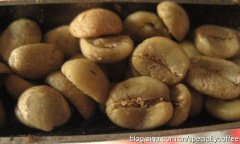Coffee basics several acids in roasted coffee
The main acids in roasted coffee are as follows-Zheng Wei (Italian Coffee University)
The following text is based on the first edition of the chemistry of quality.
The main types of acids in roasted coffee are as follows:
Formic acid is the most in shallow baking, and gradually decreases with the deepening of deep baking.
Acetic acid is the most in shallow baking, and gradually decreases with the deepening of deep baking.
Pyruvate has nothing to do with the degree of baking
Lactic acid has nothing to do with baking degree.
Malic acid is the most in shallow baking, and gradually decreases with the deepening of deep baking.
Citric acid is the most in shallow baking, and gradually decreases with the deepening of deep baking.
Quinic acid increases with the decrease of chlorogenic acid.
If you test with ARABICA% or ROBUSTA% and extract 30ml in 30 seconds, they all have a PH of 5.2.
So in terms of PH in the strict sense, coffee is "sour", but acidic and alkaline foods are not the same thing as the acid we usually drink.
The final metabolites of foods with more minerals such as potassium, sodium, calcium and magnesium are often alkaline, such as vegetables, fruits, dairy, soybeans and fungus. Properly paired with alkaline food will help to maintain acid-base balance in the body. The acidity and basicity of food has nothing to do with its own pH value (food that tastes sour is not necessarily acidic food). It is mainly defined by the fact that food is digested, absorbed and metabolized, and finally becomes acidic or alkaline in the human body. Those that produce acidic substances are called acidic foods, such as animal viscera, muscles, plant seeds (cereals). Those that produce alkaline substances are called alkaline foods, such as vegetables, melons, beans, tea and so on.
The following article comes from:
Http://www.alkaline-alkaline.com/acid_alkaline.html
NUTRITION AND ACID-ALKALINE BALANCE
Before World War II, there was considerable interest in how the food we eat affects the acid-alkaline balance of the body. While today the subject is not receiving much attention in orthodox circles, many alternative practitioners place considerable stress on the acid-base balance characteristics of various diets. In spite of a certain amount of ongoing debate, it is generally acknowledged that the food that is eaten is a major source of acid and alkali for the body (7).
Some confusion in terminology has resulted because of the way that the discussion evolved. In investigating how different foods might affect the acid-alkaline balance, various foods were burned to ash in the laboratory, and the pH of the resulting ash was measured. These foods were then classified as acid, alkaline or neutral ash foods as shown in Table 3 (8).
TABLE 3. Acid, Alkaline and Neutral Ash Foods (8)
Acid Ash FoodsAlkaline Ash FoodsNeutral Ash Foods
Bread (grains) cheesearrowroot
Cakecreambutter
Cerealmost fruitcandy
Mayonnaisejamcoffee
Cranberriesmilkcornstarch
Plumsalmondslard
Pruneschestnutsmargarine
Meatcoconutvegetable oil
Brazil nutsmolassespostum
Walnutsmost vegetableswhite sugar
Peanuts syrup
Legumes tapioca
Corn tea
Another way is to ash the food to be tested, and then test the PH value of the ash to determine whether the ingredient is acidic or alkaline.
Summary: for coffee drinkers, we should not think that coffee is alkaline because it contains caffeine (alkaloids), nor because it contains a lot of acid. It is believed that coffee is neutral after being metabolized by the human body, so drinking coffee will not destroy the acid-base balance of our body.
Important Notice :
前街咖啡 FrontStreet Coffee has moved to new addredd:
FrontStreet Coffee Address: 315,Donghua East Road,GuangZhou
Tel:020 38364473
- Prev

Coffee common sense Coffee roasting process after picking
Generally speaking, coffee roasting is a time-temperature dependent process in which physical changes and chemical reactions occur in raw coffee. Roasting is the last and most important step in the processing of coffee beans after they have been picked. Green coffee beans cannot be used directly to make drinking coffee. All coffee beans must be roasted before grinding and brewing. not
- Next

The general knowledge of fine coffee explains the roasting stage table of coffee beans in detail.
Degree description stage description stage description special point description flavor and appearance description refers to baking until the end of the first burst. Light baking is rarely used and is generally used only for testing. Cinnamon roasting is widely used in some canned coffee. The firepower is difficult to reach the bean core, and it is easy to cause half-cooked condition, so
Related
- Beginners will see the "Coffee pull flower" guide!
- What is the difference between ice blog purified milk and ordinary milk coffee?
- Why is the Philippines the largest producer of crops in Liberia?
- For coffee extraction, should the fine powder be retained?
- How does extracted espresso fill pressed powder? How much strength does it take to press the powder?
- How to make jasmine cold extract coffee? Is the jasmine + latte good?
- Will this little toy really make the coffee taste better? How does Lily Drip affect coffee extraction?
- Will the action of slapping the filter cup also affect coffee extraction?
- What's the difference between powder-to-water ratio and powder-to-liquid ratio?
- What is the Ethiopian local species? What does it have to do with Heirloom native species?

